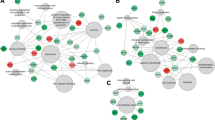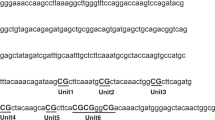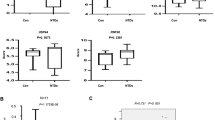Abstract
GLI2 is a key mediator of the sonic hedgehog (Shh) signaling pathway and plays an important role in neural tube development during vertebrate embryogenesis; however, the role of gli2 in human folate-related neural tube defects remains unclear. In this study, we compared methylation status and polymorphisms of gli2 between spina bifida patients and a control group to explore the underlying mechanisms related to folate deficiency in spina bifida. No single nucleotide polymorphism was found to be significantly different between the two groups, although gli2 methylation levels were significantly increased in spina bifida samples, accompanied by aberrant GLI2 expression. Moreover, a prominent negative correlation was found between the folate level in brain tissue and the gli2 methylation status (r = −0.41, P = 0.014), and gli2 hypermethylation increased the risk of spina bifida with an odds ratio of 12.45 (95 % confidence interval: 2.71–57.22, P = 0.001). In addition, we established a cell model to illustrate the effect of gli2 expression and the accessibility of chromatin affected by methylation. High gli2 and gli1 mRNA expression was detected in 5-Aza-treated cells, while gli2 hypermethylation resulted in chromatin inaccessibility and a reduced association with nuclear proteins containing transcriptional factors. More meaningful to the pathway, the effect gene of the Shh pathway, gli1, was found to have a reduced level of expression along with a decreased expression of gli2 in our cell model. Aberrant high methylation resulted in the low expression of gli2 in spina bifida, which was affected by the change in chromatin status and the capacity of transcription factor binding.







Similar content being viewed by others
References
Sugimura K, Fukushima Y, Ishida M, Ito S, Nakamura M, Mori Y, Okumura K (2010) Cell cycle-dependent accumulation of histone H3.3 and euchromatic histone modifications in pericentromeric heterochromatin in response to a decrease in DNA methylation levels. Exp Cell Res 316(17):2731–2746
Juriloff DM, Harris MJ (2012) A consideration of the evidence that genetic defects in planar cell polarity contribute to the etiology of human neural tube defects. Birth Defects Res A Clin Mol Teratol 94(10):824–840
Matise MP (2013) Molecular genetic control of cell patterning and fate determination in the developing ventral spinal cord. Wiley Interdiscip Rev Dev Biol 2(3):419–425
Murdoch JN, Copp AJ (2010) The relationship between sonic hedgehog signaling, cilia, and neural tube defects. Birth Defects Res A Clin Mol Teratol 88(8):633–652
Beaudin AE, Stover PJ (2009) Insights into metabolic mechanisms underlying folate-responsive neural tube defects: a minireview. Birth Defects Res A Clin Mol Teratol 85(4):274–284
Greene ND, Stanier P, Copp AJ (2009) Genetics of human neural tube defects. Hum Mol Genet 18(R2):R113–R129
Wallingford JB, Niswander LA, Shaw GM, Finnell RH (2013) The continuing challenge of understanding, preventing, and treating neural tube defects. Science 339(6123):1222002
Detrait ER, George TM, Etchevers HC, Gilbert JR, Vekemans M, Speer MC (2005) Human neural tube defects: developmental biology, epidemiology, and genetics. Neurotoxicol Teratol 27(3):515–524
Greene ND, Stanier P, Moore GE (2011) The emerging role of epigenetic mechanisms in the etiology of neural tube defects. Epigenetics 6(7):875–883
Farkas SA, Bottiger AK, Isaksson HS, Finnell RH, Ren A, Nilsson TK (2013) Epigenetic alterations in folate transport genes in placental tissue from fetuses with neural tube defects and in leukocytes from subjects with hyperhomocysteinemia. Epigenetics 8(3):303–316
Wang L, Wang F, Guan J, Le J, Wu L, Zou J, Zhao H, Pei L (2010) Relation between hypomethylation of long interspersed nucleotide elements and risk of neural tube defects. Am J Clin Nutr 91(5):1359–1367
Wu L, Wang L, Shangguan S, Chang S, Wang Z, Lu X, Zhang Q, Wang J et al (2013) Altered methylation of IGF2 DMR0 is associated with neural tube defects. Mol Cell Biochem 380(1-2):33–42
Ybot-Gonzalez P, Cogram P, Gerrelli D, Copp AJ (2002) Sonic hedgehog and the molecular regulation of mouse neural tube closure. Development 129(10):2507–2517
Yu K, McGlynn S, Matise MP (2013) Floor plate-derived sonic hedgehog regulates glial and ependymal cell fates in the developing spinal cord. Development 140(7):1594–1604
Pan Y, Wang C, Wang B (2009) Phosphorylation of Gli2 by protein kinase A is required for Gli2 processing and degradation and the sonic hedgehog-regulated mouse development. Dev Biol 326(1):177–189
Diede SJ, Guenthoer J, Geng LN, Mahoney SE, Marotta M, Olson JM, Tanaka H, Tapscott SJ (2010) DNA methylation of developmental genes in pediatric medulloblastomas identified by denaturation analysis of methylation differences. Proc Natl Acad Sci U S A 107(1):234–239
Shahi MH, Afzal M, Sinha S, Eberhart CG, Rey JA, Fan X, Castresana JS (2010) Regulation of sonic hedgehog-GLI1 downstream target genes PTCH1, Cyclin D2, Plakoglobin, PAX6 and NKX2.2 and their epigenetic status in medulloblastoma and astrocytoma. BMC Cancer 10:614
Li J, Wang C, Pan Y, Bai Z, Wang B (2011) Increased proteolytic processing of full-length gli2 transcription factor reduces the hedgehog pathway activity in vivo. Dev Dyn 240(4):766–774
Karlstrom RO, Tyurina OV, Kawakami A, Nishioka N, Talbot WS, Sasaki H, Schier AF (2003) Genetic analysis of zebrafish gli1 and gli2 reveals divergent requirements for gli genes in vertebrate development. Development 130(8):1549–1564
Nagao H, Ijiri K, Hirotsu M, Ishidou Y, Yamamoto T, Nagano S, Takizawa T, Nakashima K et al (2011) Role of GLI2 in the growth of human osteosarcoma. J Pathol 224(2):169–179
Chandler AL, Hobbs CA, Mosley BS, Berry RJ, Canfield MA, Qi YP, Siega-Riz AM, Shaw GM (2012) Neural tube defects and maternal intake of micronutrients related to one-carbon metabolism or antioxidant activity. Birth Defects Res A Clin Mol Teratol 94(11):864–874
Stover PJ (2009) One-carbon metabolism-genome interactions in folate-associated pathologies. J Nutr 139(12):2402–2405
Hoffman AR, Hu JF (2006) Directing DNA methylation to inhibit gene expression. Cell Mol Neurobiol 26(4-6):425–438
Jacob J, Briscoe J (2003) Gli proteins and the control of spinal-cord patterning. EMBO Rep 4(8):761–765
Litingtung Y, Chiang C (2000) Control of Shh activity and signaling in the neural tube. Dev Dyn 219(2):143–154
Hui CC, Slusarski D, Platt KA, Holmgren R, Joyner AL (1994) Expression of three mouse homologs of the Drosophila segment polarity gene cubitus interruptus, Gli, Gli-2, and Gli-3, in ectoderm- and mesoderm-derived tissues suggests multiple roles during postimplantation development. Dev Biol 162(2):402–413
Shahi MH, Holt R, Rebhun RB (2014) Blocking signaling at the level of GLI regulates downstream gene expression and inhibits proliferation of canine osteosarcoma cells. PLoS One 9(5):e96593
Reddington JP, Pennings S, Meehan RR (2013) Non-canonical functions of the DNA methylome in gene regulation. Biochem J 451(1):13–23
Black JC, Whetstine JR (2011) Chromatin landscape: methylation beyond transcription. Epigenetics 6(1):9–15
Razin SV, Iarovaia OV, Sjakste N, Sjakste T, Bagdoniene L, Rynditch AV, Eivazova ER, Lipinski M et al (2007) Chromatin domains and regulation of transcription. J Mol Biol 369(3):597–607
Vassetzky Y, Lemaitre JM, Mechali M (2000) Specification of chromatin domains and regulation of replication and transcription during development. Crit Rev Eukaryot Gene Expr 10(1):31–38
Kyo S, Takakura M, Fujiwara T, Inoue M (2008) Understanding and exploiting hTERT promoter regulation for diagnosis and treatment of human cancers. Cancer Sci 99(8):1528–1538
Rhodes K, Rippe RA, Umezawa A, Nehls M, Brenner DA, Breindl M (1994) DNA methylation represses the murine alpha 1(I) collagen promoter by an indirect mechanism. Mol Cell Biol 14(9):5950–5960
Knight JC (2003) Functional implications of genetic variation in non-coding DNA for disease susceptibility and gene regulation. Clin Sci (Lond) 104(5):493–501
Molloy AM, Brody LC, Mills JL, Scott JM, Kirke PN (2009) The search for genetic polymorphisms in the homocysteine/folate pathway that contribute to the etiology of human neural tube defects. Birth Defects Res A Clin Mol Teratol 85(4):285–294
Carter TC, Kay DM, Browne ML, Liu A, Romitti PA, Kuehn D, Conley MR, Caggana M et al (2013) Anorectal atresia and variants at predicted regulatory sites in candidate genes. Ann Hum Genet 77(1):31–46
Acknowledgments
This project was supported by the National Natural Science Foundation of China (grant numbers 81370967 and 81270699) and Beijing Natural Science Foundation (7132036).
Conflicts of Interest
None of the authors declared any conflict of interest.
Author information
Authors and Affiliations
Corresponding authors
Additional information
Xiao-Lin Lu and Li Wang contributed equally to this work.
Rights and permissions
About this article
Cite this article
Lu, XL., Wang, L., Chang, SY. et al. Sonic Hedgehog Signaling Affected by Promoter Hypermethylation Induces Aberrant Gli2 Expression in Spina Bifida. Mol Neurobiol 53, 5413–5424 (2016). https://doi.org/10.1007/s12035-015-9447-0
Received:
Accepted:
Published:
Issue Date:
DOI: https://doi.org/10.1007/s12035-015-9447-0




